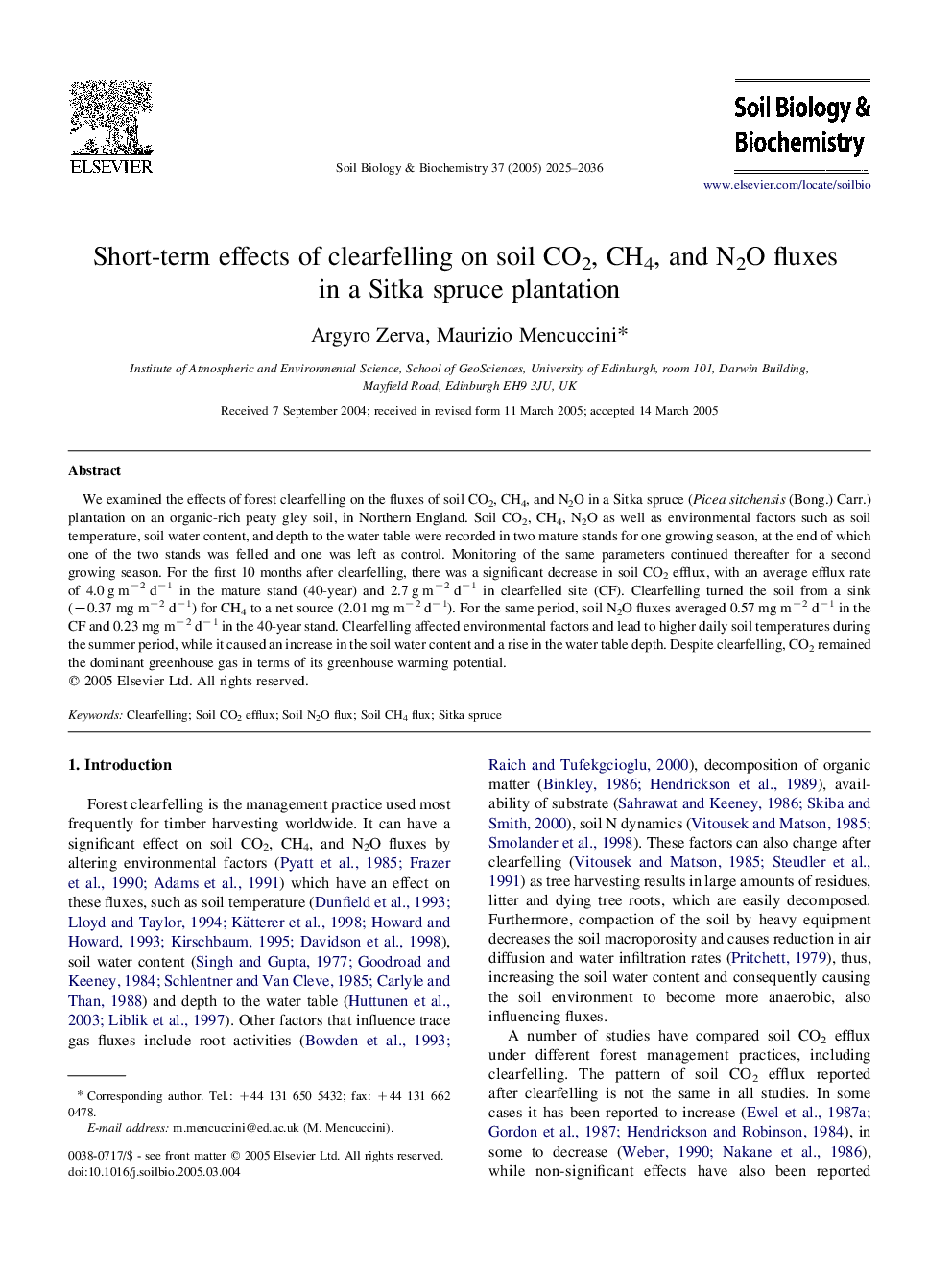| Article ID | Journal | Published Year | Pages | File Type |
|---|---|---|---|---|
| 2027247 | Soil Biology and Biochemistry | 2005 | 12 Pages |
We examined the effects of forest clearfelling on the fluxes of soil CO2, CH4, and N2O in a Sitka spruce (Picea sitchensis (Bong.) Carr.) plantation on an organic-rich peaty gley soil, in Northern England. Soil CO2, CH4, N2O as well as environmental factors such as soil temperature, soil water content, and depth to the water table were recorded in two mature stands for one growing season, at the end of which one of the two stands was felled and one was left as control. Monitoring of the same parameters continued thereafter for a second growing season. For the first 10 months after clearfelling, there was a significant decrease in soil CO2 efflux, with an average efflux rate of 4.0 g m−2 d−1 in the mature stand (40-year) and 2.7 g m−2 d−1 in clearfelled site (CF). Clearfelling turned the soil from a sink (−0.37 mg m−2 d−1) for CH4 to a net source (2.01 mg m−2 d−1). For the same period, soil N2O fluxes averaged 0.57 mg m−2 d−1 in the CF and 0.23 mg m−2 d−1 in the 40-year stand. Clearfelling affected environmental factors and lead to higher daily soil temperatures during the summer period, while it caused an increase in the soil water content and a rise in the water table depth. Despite clearfelling, CO2 remained the dominant greenhouse gas in terms of its greenhouse warming potential.
